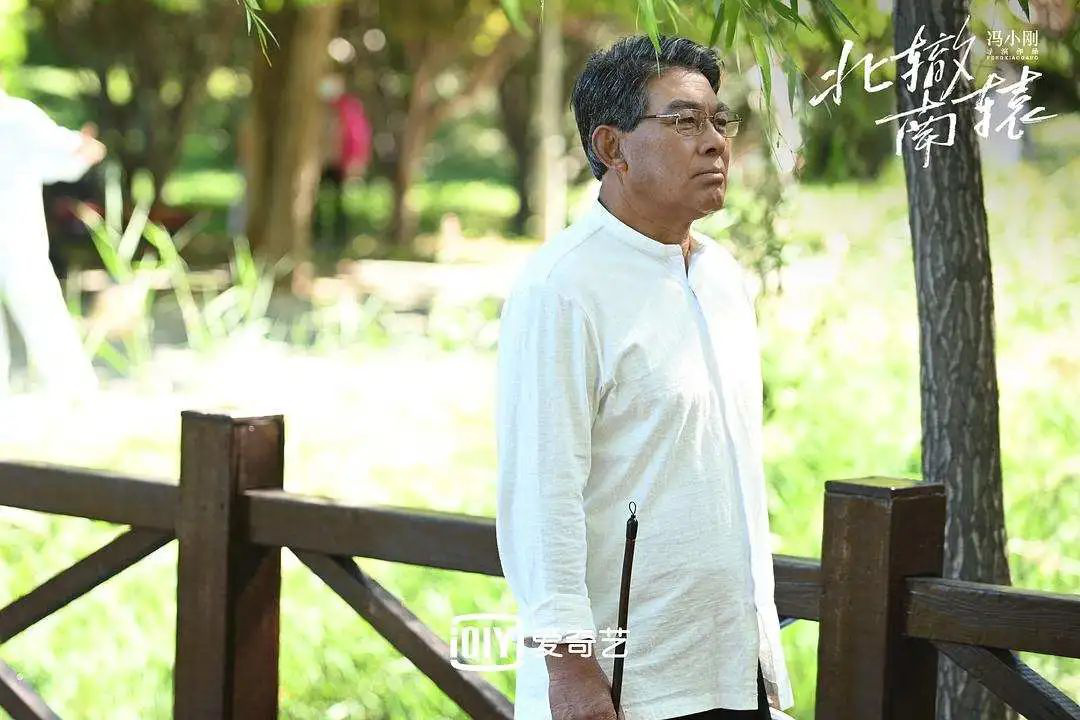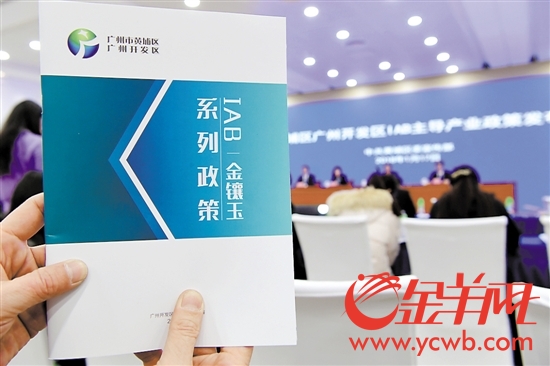[Reform Seal] Who made a fish on our dining table?
[Text/Observer Network Dou Nong]
In recent years, it seems that more and more people begin to complain about the freshness of the sea (river) at the dinner table, saying that the cultured products are not as good as "pure natural" … … Is it really not fresh?
In the absence of a double-blind test, freshness and freshness are just words. In my opinion, it is not so much freshness, but the process from scratch and from existence to abundance is too fast, and everyone is tired of eating.
Imagine, if you only eat fish three or five times a year, who will complain? Now even if I eat fish three times a day, others won’t say anything.
So, when did Chinese start to have a fish on the table? Some people may say "since ancient times", however, it is only nearly 34 years since ordinary people in most parts of the country have eaten fish.

Every year in the hairy crab season, this old photo of "the poor people ate hairy crabs before liberation" will appear on the Internet. But this American photographer
Walter Arrufat’s old photos taken in the 1940s only recorded a little boy eating crabs in Shanghai. Not to mention whether it was hairy crabs or not, it was definitely not a poor family at that time for the sake of his clothes and belongings.
"This is what the emperor used to eat."
There is a "fishbone incident" in the third part of Ordinary World. After the implementation of the contract responsibility system, Tian Haimin and his wife in Shuangshui Village set up a fish farm and gave several fish to each family in the village, causing a "sensation" — — Most people in the village have never eaten fish, thinking that "this is what the emperor used to eat". Some people didn’t come because they were afraid to eat this hideous monster.
Even now, the midwestern students who go to school in the eastern coastal areas have interesting expressions when they first meet crabs and shrimps, if they have never seen them before.
How to cook these fish stumped the housewives in the village. Some were scared by this "strange thing" and dared not move the knife, so they had to let men get started, and men almost used the courage to kill cattle to deal with it. As for the practice, in addition to cooking and braising in soy sauce, there are also fish covered with mud and burned in the stove with fire ash; Some people don’t even know how to remove fish scales and dig internal organs, and they eat everything inside and out … … Worst of all, I don’t know how many people had fishbones stuck in their throats that day! Later, an experienced person — — When he was young, he worked as a worker in Taiyuan Steel Plant for several years and ate fish several times — — I suggest you go back and soften the fishbone with vinegar.
The prototype of Ordinary World is the countryside of Shaanxi Province, and the story background is set in the 1980s. This little comedy, which is somewhat absurd, reveals a fact that seems unimaginable now: until the 1980s, most places in central and western China had hardly eaten fish, if they didn’t live by rivers and lakes.

The traditional drama "Fishing and Killing the Family" tells the story of the struggle between the father and daughter of the hero Sean (Ruan Xiaoqi lived in seclusion and changed his name) against the fisherman.
Some people may scoff at this. Indeed, when it comes to China, people’s impression is "vast territory and abundant resources", and fishery is the oldest production industry of mankind, which has a long history in China. China has superior natural conditions, a long history and rich experience and technology. Your conclusion is too exaggerated.
In fact, the ancient houses of dignitaries may be able to be "meticulous", but for people who don’t live by the water, fish represents "delicacies of mountains and seas". Under the condition that it is impossible to raise fish — — Not to catch fish from rivers and lakes and raise them, but to cultivate fish from fry — — Aquatic products are insulated from most people.
From modern times to before liberation, due to the long-term oppression of the three mountains, the aquaculture industry was dying. Except for a few poor fishermen, they struggled on the line of life and death. Inland fishermen have a saying that "fish come out of the water to raise three families, lake tyrants, fishermen and fishermen", while coastal fishermen have "fishermen have three knives on their heads, fishing, taxes and robbers".
By 1949, the total output of aquatic products in China was only 450,000 tons. At that time, the national population reached "450 million", that is, the average person ate 2 Jin of fish every year. Considering the preservation conditions and transportation conditions at that time, the median was extremely low.
After the founding of New China, the wounds of the war were quickly healed, and the aquaculture industry was restored and developed. The output soon exceeded the highest year before the war (1936) and reached 3.46 million tons in 1957. Chairman Mao Zedong once predicted that "three mountains and six waters divide the land, and agriculture is promising". However, for a long time, due to political, policy, technical and other reasons, the aquaculture industry has not made great progress, and the voice of "it is difficult to eat fish" has been repeated. "Difficult to eat fish" finally alarmed the central government, and aquaculture later became a pilot project for the whole industry.
Who said "domestic fish can’t breed successfully in China"?
The implementation of the policy is inseparable from the progress of technology, which is a strong guarantee for us to "eat fish until we are tired". Over the past half century, the aquaculture people in China have broken through one technology after another, so that the rural areas in the northwest border can bid farewell to the "difficulty in eating fish".
Take the "four big fish" as an example. Now you can order them in almost any restaurant, but before 1957, how easy was it to buy four big fish in the aquatic products market? This great change is inseparable from the sweat and wisdom of a series of scholars, such as Tan Yujun, Zhong Lin, Liu Jun … … When the majority of foodies are enjoying steamed fish, boiled fish, tofu pudding fish, sweet and sour fish and barbecue fish, they may wish to look at this string of names and the stories behind them.
At that time, the culture techniques of the four major fish also existed, but they still basically continued the tradition of the Tang Dynasty — — Catch young fish from natural rivers and then cultivate them artificially. For thousands of years, the fry of the main cultured fish, such as bighead carp, silver carp, green carp, grass and shad, have been fished from the Yangtze River, Xijiang River and other rivers, so agriculture and fisheries must buy them from the fry producing areas. They spend a lot of manpower, material resources and financial resources, and the survival rate of buying back fry is still very low. If the domestic fish raised in the pond can be artificially propagated to fry, then the fry problem will be completely solved.
It’s easier said than done. In 1957, Tan Yujun was appointed to be responsible for the breeding of domestic fish in Jiangsu and Zhejiang. At that time, Japanese experts asserted that "domestic fish could not breed successfully in China". Tan Yujun did not believe this evil, and put forward a technical route different from that of British experts in practice, and finally solved the problem of artificial breeding of silver carp and bighead carp in 1960.

Zhong Lin systematically devoted himself to the study of artificial propagation of domestic fish as early as 1953. On June 3, 1958, he successfully bred silver carp and bighead carp in the pond naturally, and obtained more than 30,000 healthy fry, thus ending the history of freshwater fish fry relying on river fishing for generations and creating a new era of freshwater fish culture history. As the pioneer of the artificial propagation of the "four big fish" in China, Zhong Lin’s achievements are world-leading. He won the National Invention Award in 1965 and the National Science Conference Award in 1978, and enjoyed the reputation of "the father of artificial propagation of domestic fish".
Since then, Zhong Lin, together with scientific and technological personnel, has successively broken through the artificial propagation of grass, bream, bream and other fish, making the technology and theory of total artificial propagation of freshwater fish in China always in the international leading position.
Liu Yun is a famous expert in fish breeding and breeding in China, and the former vice chairman of china society of fisheries. He is called "Fish Sage" and "Fish Academician" by the industry. With more than half a century’s efforts, he theoretically established a systematic reproductive physiology of the main cultured fish (four major fish), soft-shelled turtle (Trionyx sinensis) and edible frogs in China, and developed a technical system for artificial reproduction and breeding of cultured fish and aquatic economic animals in practice; The first tetraploid fish population with stable genetic traits and natural reproduction was established at home and abroad by using the comprehensive technology of cell engineering and sexual hybridization, and high-quality triploid crucian carp and triploid carp were successfully cultivated.
The breakthrough of artificial propagation technology of "four big fish" is a milestone in the field of aquaculture in China, which completely ends the history that the fry of "domestic fish" aquaculture in China depend on river fishing for thousands of years and gets rid of the state of "relying on the sky to eat" in fish farming since ancient times. In 1988, the national freshwater aquaculture output reached 3.9 million tons, ranking first in the world. This is a fundamental turning point in the history of freshwater fish farming.

The successful introduction and breeding of African crucian carp (tilapia) is also an example. As early as July 1978, the Yangtze River Fisheries Research Institute took the lead in introducing 22 Nile tilapia, and carried out a series of trial breeding and research work. Subsequently, the Freshwater Fisheries Research Center, the Pearl River Fisheries Research Institute and relevant domestic scientific research and teaching institutions did a lot of research and promotion work, which made tilapia farming quickly spread throughout the country. In recent years, China’s tilapia farming output has ranked first in the world, which has had an important impact on the world.
The breeding technology of precious sturgeon was also studied in 1950s, when only artificially bred fry were successfully obtained. It was not until 1990s that a series of technical problems such as artificial breeding of sturgeon fry, multi-mode breeding and deep processing of products were broken through, making China a world-renowned sturgeon research and breeding country. In 2008, the output of cultured sturgeon in China reached 21,400 tons, accounting for 83.3% of the world.
"Peach Blossom Flowing Water and Mandarin Fish Fertilizer", the experiment of artificial culture of mandarin fish pond also began in 1950s. In 1958, natural fry were caught in many areas for trial culture. The experiment showed that mandarin fish could be cultured in small water bodies. In 1970s, Jiangsu, Zhejiang, Hubei and other provinces made great breakthroughs in artificial propagation technology of Siniperca chuatsi, which promoted and developed artificial breeding. By the end of 1980s, the whole artificial breeding technology from artificial propagation, fry breeding to commercial fish breeding had been basically improved.
It is not difficult to eat seafood, and it is no longer difficult to eat seafood.
Besides freshwater fish, aquaculture people in China also began to explore the cultivation of seafood early. In the 1950s, the Yellow Sea Fisheries Research Institute began to study prawn culture, tackling key problems from the aspects of efficient prawn culture, development of mixed bait and artificial propagation. In the 1980s, the success of "shrimp factory full artificial breeding technology" made China’s shrimp aquaculture enter a large-scale period, set off the second wave of China’s marine aquaculture, and achieved great social and economic benefits. In 1985, this achievement won the first prize of the National Science and Technology Progress Award and the gold medal of the World Intellectual Property Organization Special Award.

Nowadays, eel fry still has the title of "soft gold", precisely because the artificial propagation technology of fry has not made a major breakthrough, and only wild fry can be caught for breeding. In fact, China also attaches great importance to the artificial propagation of eel fry, which has been listed as a national key scientific research project in the Fifth, Sixth, Seventh and Eighth Five-Year Plans since the 1970s, and is still at the leading level in the world. In 2010, Japan successfully propagated Japanese eel for the first time, but it is still far from industrialization.
Just two months ago, the news that another kind of fish was close to the success of artificial farming once again alarmed the foodies.
The delicacy of hairtail has also been recited by foodies. Fishermen have a long history of catching this kind of fish, but fishery experts have always wanted to conquer domestication technology, and the road is very tortuous. Hairtail has the curse of "death from water", not to mention artificial breeding. Even old fishermen have hardly seen live hairtail, and there is no record of feeding hairtail in China.
This world-wide problem was solved by Zhoushan Fisheries Research Institute in Zhejiang.
There are four famous marine products in the East China Sea: Pseudosciaena crocea, Pseudosciaena crocea, cuttlefish and hairtail. Except hairtail, the other three culture techniques have long been conquered by human beings. People can now eat large yellow croaker with good quality and low price, and artificial breeding has made great achievements.
Hairtail lives in the deep sea. Hairtail is usually caught from the deep sea by ocean trawl, and dies when it comes ashore. Moreover, hairtail is a migratory fish. According to the change of water temperature, it migrates thousands of miles every year, swimming between offshore and ocean, and between the East China Sea in the south and the Yellow Sea and Bohai Sea in the north. Artificial cannot provide such a migratory environment.
In addition, hairtail has no large scales on its body surface, and is vulnerable to trauma. Hairtail is fierce in nature, and the same species kill each other, which brings difficulties to human breeding.
Xu Zhijin, director of Zhoushan Fisheries Research Institute, said that they gradually domesticated hairtail and changed its habits, just like a pheasant turned into a domestic chicken, and its habits completely changed, which required an adaptation process.

If it goes well, this batch of hairtail can grow to 70-80 cm long in the first half of next year, with mature gonads and entering the breeding period. Although it may take years or even decades to be industrialized, just as China is still cultivating truffles artificially, it is enough to leave room for foodies to imagine.
… … … … … …
In addition to the direct fish, shrimp and crab culture technology, there are many breakthroughs in aquaculture-related technologies, which also ensure the stable production, increase production and high yield of aquaculture, such as the impeller aerator for aquaculture that appeared in the 1970s, the aquaculture technology in saline-alkali land in the 1990s, the aquaculture capacity in shallow water bay, the ecological optimization technology and the large-scale aquaculture technology. On the list of the annual National Science and Technology Awards Conference, it is always not difficult for us to find technological breakthroughs related to aquaculture.
Now, with the passage of time, Academician Lei Jilin, the father of China’s treasure fish, Academician Zhang Fusui, the father of China scallops, and Academician Liu Yun have all left us. As foodies, we should at least give them a bouquet of incense.

From "Who Will Feed China" to "Great Contribution of Aquaculture"
Over the past 60 years, China’s aquaculture industry has embarked on a development path of "focusing on aquaculture", which has not only become the country with the largest total output of aquatic products in the world, but also the only aquatic country in the world with aquaculture output exceeding fishing. At present, China’s aquaculture output accounts for 70% of the total output of aquatic products.
In 1994, Lester R.Brown, a scholar of the American Grain Research Institute, published an article entitled "Who will feed China? The article boldly predicts that the irreversible trend of food consumption in China will become more and more obvious in the future. They are taking the road that the west once took, and paying attention to the consumption of meat food up the food chain, which indirectly consumes a lot of food. By 2030, the world will not have enough food to "feed" China.
When Brown came to China in 2008 and was interviewed by Global Times, although he still did not change his point of view, he admitted that China’s contribution to the world was family planning and freshwater fisheries. In the past 30 years, the freshwater fishery in China has made great progress, which is a great contribution to the world. Lester Brown believes that the world has not realized how good this is. China is a big fishing country in the world, and its aquaculture production accounts for 68% of the total aquaculture production in the world, which not only provides people with a large number of high-quality protein, but also provides an important guarantee for national food security.
For decades, especially in the past 40 years of reform and opening-up, China has devoted itself to the research on breeding and reproduction techniques of special aquatic products and the introduction and domestication of special aquatic products. By promoting complete sets of comprehensive fish farming techniques in poor areas, thousands of families have been freed from poverty and embarked on the road of prosperity. Brown once said excitedly when he visited Wuxi Freshwater Center: "China is really amazing!" .
In the past 30 years, half of the increase of aquatic products in the world came from China. About 70% of the world aquaculture production comes from China. Since 2002, China has become the largest trading country of aquatic products in the world. China is also the main base of processing trade of aquatic products in the world, and occupies an important position in the international market division of labor.
In 2008, the output of aquatic products in China was 48.96 million tons, 108 times that of 1949. The share of fishery output value in large-scale agriculture has increased from 0.2% at the beginning of the People’s Republic of China to about 10%, and it is one of the fastest-growing industries in large-scale agriculture. The per capita possession of aquatic products has increased from a negligible 1 kg in 1949 to 36 kg in 2008, which is 1.6 times of the world average. The per capita consumption of aquatic protein has increased from almost zero to about 1/3 of the per capita consumption of animal protein, effectively improving the dietary structure of urban and rural residents and improving people’s health.
The development of aquaculture has made a qualitative change and breakthrough in the growth mode of China’s fishery in the past two or three decades, from fishing to aquaculture, from "herding and fishing" to "domesticating". This is a process that other agricultural industries will take hundreds of years and thousands of years to complete, rewriting the development history and civilization history of the world fishery, which is a great contribution.
In February this year, the data released by the National Bureau of Statistics showed that under the background of increasing downward pressure on the fishery economy, China’s fishery economy was improving while maintaining "quantity" stability. In 2016, the total output of aquatic products in China was the same as that in 2015, reaching 67 million tons, with a per capita possession of about 49 kilograms.
How are these big data reflected in our real life?
I still remember that in 2011, I went to Gansu’s most northwest county as a volunteer, which was an arid area on the Gobi Desert, but I seemed to be in the "land of plenty" in the south of the Yangtze River. There is no shortage of fish in restaurants in the county, and two large local reservoirs provide abundant freshwater fish. Once a party even put on a whole fish feast, and a dozen fish were served on a table.
Back to the question of freshness at the beginning, in a small coastal town in the east of my hometown, wild abalone costs more than 120 yuan a catty, and cultured abalone costs less than 10 yuan a half palm. Is it fresh or not?

















































